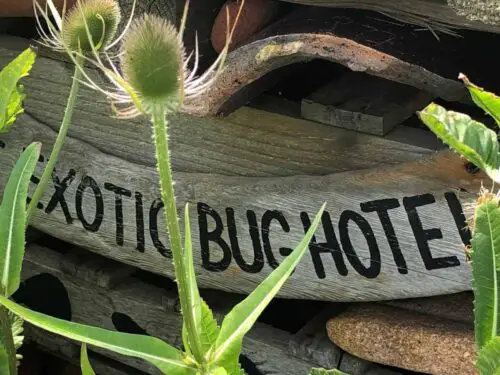Bug or wildlife hotels come in varying sizes, styles and shapes, depending on which species you are creating a home for. Your hotel can be compiled of both natural material and leftover items that can be recycled to provide shelter, nesting sites, hibernation, and safety from predators. Ladybirds, bees, and hedgehogs have different requirements, but you can construct an all-in-1 hotel.
Building a wildlife bug hotel is fun and educational for children, and to be honest, grown-ups too. It provides the opportunity for children to watch and learn about the existence of amphibians, invertebrates, ladybirds, and hedgehogs.
Our woodlands, hedgerows, and countryside are disappearing because of the impact and growth of mass suburban areas. Therefore is it important for us to maintain the ecosystem for all species and teach the next generation about its importance? One example is solitary bees as they provide essential maintenance with pollination, which in turn allows plants to be healthy. Bees adore flowers such as Lamb’s Ear and Lavender. Although your hotel will be built in damp, sheltered conditions to aid creepy crawlies, sprinkling wildflower seeds in a nearby sunny spot and planting flowers will entice bees and butterflies.
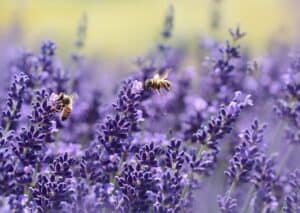
What are the first things to consider before building a wildlife bug hotel?
Think about the time of year. Autumn is best in readiness for the winter and hibernation period. A consideration for location is essential too – some invertebrates need cool, damp conditions and others warmer.
Never build a wildlife bug hotel by your vegetable plot! The bugs will feel like they have a banquet!
Research has shown that south to the south-east facing hotel is best. Mine was west but it still worked! And when you design your hotel, remember to construct 2m from the ground.
If you plan for flowers to grow beside the hotel to provide food for butterflies, and giving solitary bees the opportunity to pollinate, then the framework would need to be built in a partly sunny spot. Or place flowery shrubs nearby so they thrive in growth from the sun.
When my nephew and I built our wildlife bug hotel, I lived in the countryside, and my garden had a woodland feel. We built the hotel in a sheltered, dark, moist corner beside a giant fir tree. It stood on a carpet of dead leaves blown into a corner by the wind. Nearby shrubs and plants, including my neighbours overhanging butterfly tree, attracted bees and beautiful butterflies. And the opposite side of the hotel grew a hawthorn bush with birds nesting year after year.
What materials are required to make a wildlife bug hotel?
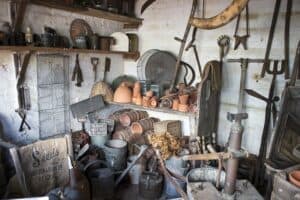
Image credit: RohPotter
Depending on natural or recycled materials, items attract different species to use the facilities.
You can find so many bits and pieces in your garden, the shed or potting shed as content for your hotel.
If allowed to do so, collect twigs, fallen leaves, dead cut grass, and deadwood, when out on a walk in the countryside, woodlands, or on the beach. Put a notice on your local Facebook asking for unwanted items listed below. Visit business industrial estates and ask if you can have old pallets for your wildlife hotel. And for nectar-rich plants, look out for roadside plant stalls in suburban villages – I have purchased plants for as little as 20p each.
Consider building your hotel with the following:
- 4 pallets of any size
- Old timber or extra bricks to raise from the ground
- Deadwood
- Hollow bamboo canes
- Twigs, dry leaves and sticks
- Terracotta pots or old chimney pots
- Stones, rocks
- Straw and hay
- Old unused birdhouse
- Loose bark
- Pinecones
- Old pipes
- Garden posts and or panel slats
- Raid your compost bin
- Turf for the roof
- Logs
- Roof tiles
- Any unused garden DIY materials
- Soil and plants for a natural roof
- Postal tubes
- Scrap wood planks
How can natural and manmade materials attract wildlife?
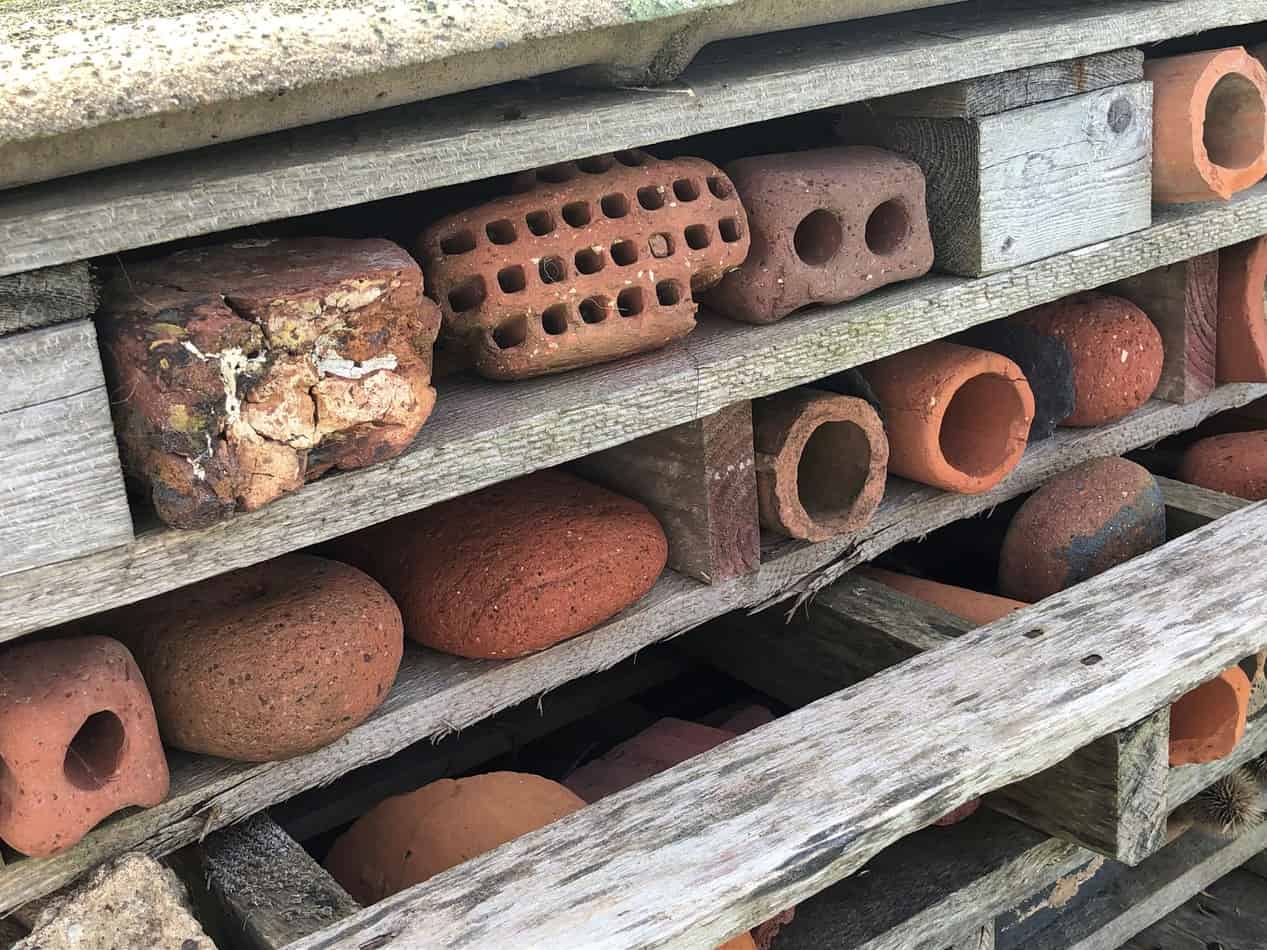
Wood and bricks with holes will encourage insects to lay eggs to hatch into larvae and provide bee nesting locations.
Dry leaves: dead leaves provide a home for insects whether included in your hotel construction or as a bed of leaves on the ground. If within the construction, expect ladybirds to hibernate during the winter.
Various sized stones, old tiles, and rocks: placed near the bottom of the hotel for amphibians (frogs, toads etc) as they like cool, damp conditions.
Hay and straw: invertebrates will push their way in and hibernate.
Bark and wood pieces: The wood and bark can be rotted and will attract beetles, spiders, centipedes, and woodlice. Decaying wood is their thing!
Dry sticks and twigs: as well as dry leaves, ladybirds will take advantage of dry twigs and sticks and hibernate.
And don’t forget, plants that flower. Nectar-rich flowers will attract wildlife with wings (butterflies, solitary bees, and bumblebees).
Which materials should not be used for a wildlife bug hotel
The RSPB recommends not using plastic tubes – it isn’t good for the environment anyway. Images on Google will show plastic bottles cut three-quarters along, filled with twigs or grass, and slotted sideways between pallets. I’ve also read that using pinecones is not a good idea but RSPB lists them as a suitable natural material for your hotel so I am inclined to go with that.
How do you assemble a wildlife bug hotel
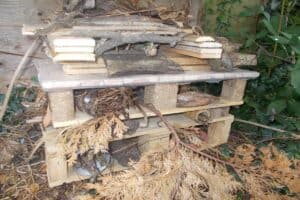
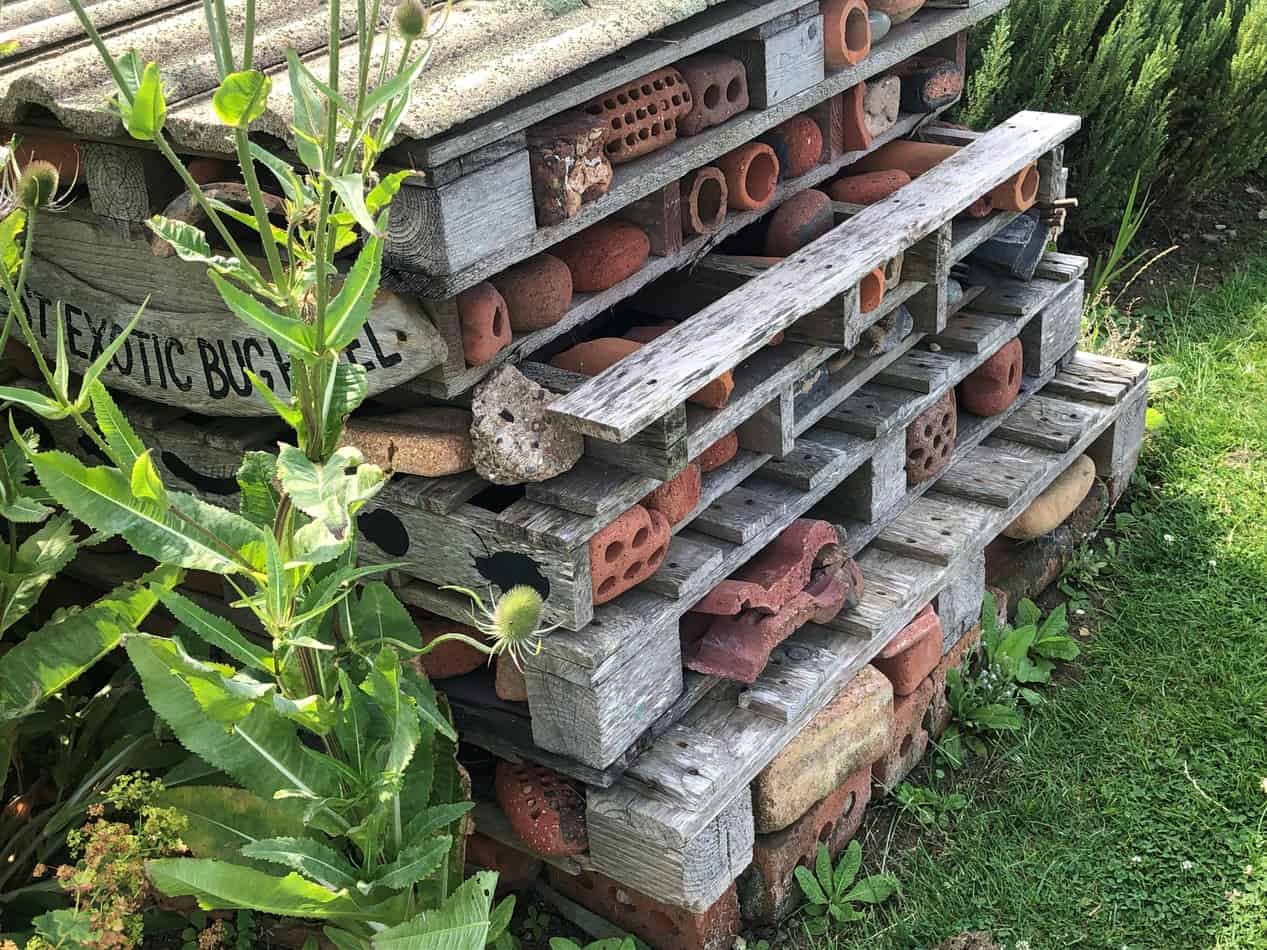
1: Consider building around 2 metres off the ground and supporting your first pallet on solid foundations. You can use bricks or old fence posts.
2: With a sheltered entrance and ground floor, hedgehogs may opt to hibernate (normally from December to April) in your hotel so fill it with dry leaves, logs, twigs, and other garden debris to encourage them to use it during their period of inactivity. Your guest will have filled its belly with beetles and earthworms to form fat reserves to carry them through the cold months so finding a place to snuggle will be a bonus. Did you know a hedgehog will hibernate beneath your garden shed if there is an opening to crawl through?
3: Pallets form the overall structure. Simply layer the pallets and fill the gaps with any collected materials. Be as creative as you want. For example, fill terracotta pots with twigs or pinecones.
4: Your hotel needs to be waterproof. Fill the roof with multipurpose compost and fill it with plants or turf as long as the sun filters through to help them survive. Or plant spreading flowers, sedum, or sow wildflowers, but again, they will need sun. Alternatively, use old roof tiles or felting. Roof tiles are heavy but felting will need weighing down with rocks or tacs.
5: If you need to secure the pallets, use cable ties, or again, weighing down with rocks or roofing tiles will suffice.
You can buy compost cheaply at Poundstretcher but do check out your local garden centre.
Creating a wildlife bug hotel sign
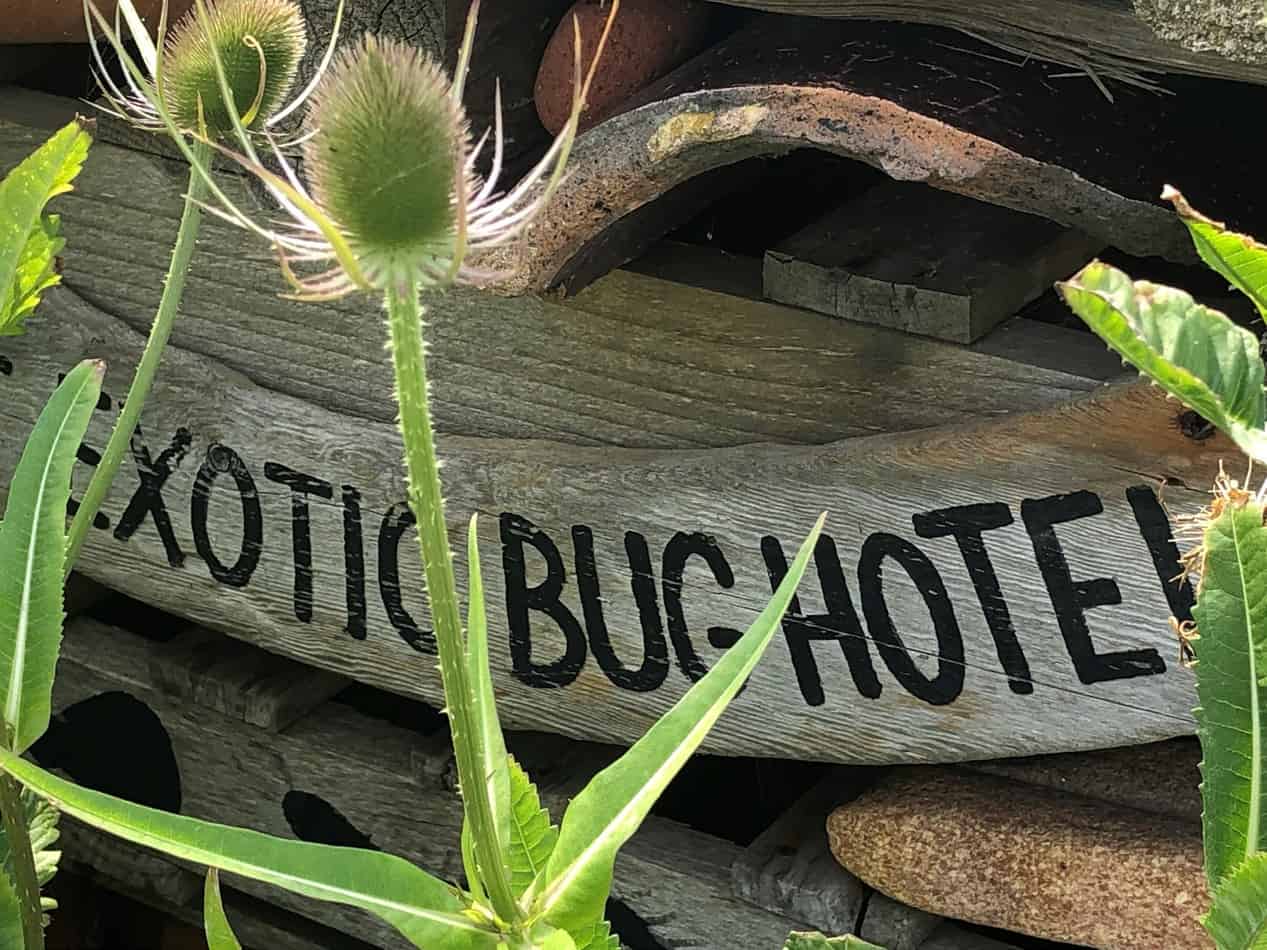
To be honest, a sign does not need to look perfect. Keep it as natural as possible with a dash of colour.
Leftover wood planks are ideal, and why not buy tester paint pots from The Range or acrylic tubes of paint from £1 shops? Add a top coat of varnish, which can be bought from cheap shops.
So what do you call the hotel?
- Wildlife Hotel
- Bug Hotel
- Insect House
- Backpackers for Bugs
- Hedgehog Apartment
- Vacancies
- No Vacancies
You can name your hotel anything that you want.
Should I clean a wildlife bug hotel?
In the spring, your hotel will need to be cleaned, which means pulling your framework apart. Invest in a baby bottle brush, a standard scrubbing brush with hard bristles, and a dedicated bucket or bowl. And buy a dustpan and brush, although you only need the brush. All these items can be purchased in your local £1 shop.
Using warm water, use the bottle brick to sanitize hard tubes. Brush debris and dust from pots, tiles, and pallets with either brush.
You may want to replace twigs, grass, leaves, etc., add new material not used before, and rejig the internal layout.
Get your wildlife bug hotel ready for the next rush of guests!
Helpful Information
It is so easy to attract wildlife to your garden. I created a wildlife haven in my with a garden full of flowers, bird food stations, making my own fat balls and feeding garden birds with regular routine. Birds need water and food when supply is limited, especially during the colder months. But seeing a garden full of natural wildlife is so rewarding because baby birds visit and grow up so you witness this amazing circle of life. It is educational because you learn about the different types of birds and watch them, and how their species survive. Strangely, these feathery things feel like company; to be honest, it brings your garden to life.
Predators can create a threat to wildlife in the garden. Sparrowhawks will kill birds, and so will cats. I reviewed the Pestbye UltraSonic Deterrent and a set of 3 Metal Cat Scarers so please have a read. I give my honest opinion! I will include videos about both on my YouTube channel very soon too.
Poppys Pets is a participant in Awin and Amazon Associate affiliate programs which compensates me for referring traffic. It is of no extra cost to you and if thinking of buying a product, please consider using my link. It\'ll earn Poppy\'s Pets a few pennies to continue to this website. Only a selection of articles and videos on this website and YouTube channel contains affiliate links. Further information: Disclaimer and Privacy Policy

